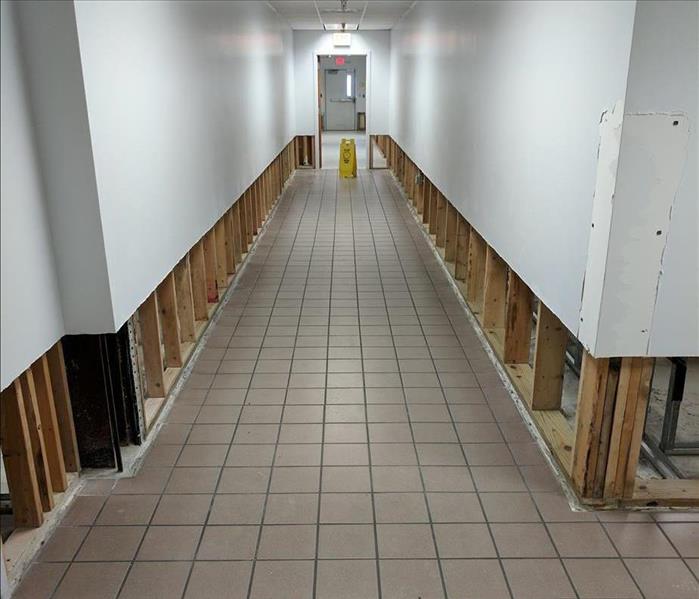Why You Want a Flood Cut
6/3/2020 (Permalink)
Why You Want a Flood Cut
It's just a bit of water. It's harmless. Isn't that what business owners in Maitland, FL, want to think when flooding hits the property? It's hard to fathom that something so simple could be quite hazardous. In actuality, though, the premises have been invaded by very dirty water, and proprietors need the assistance of a water restoration company to sanitize and remove problematic parts. A flood cut is often part of the necessity, and it's meant to help you, not hurt your place. Hopefully, the following three points will help ease your mind about the unwanted structural departure.
- Why Is Flood Water Harmful?
When water rises from streams, rivers, and oceans, it contains microbes and bacteria, more than you want anywhere around you. It is their natural habitat; thus, they float on inside, making themselves comfortable in their new home. While some materials are not as easy for them, porous items such as carpet and drywall are welcome spots. There they can thrive and cultivate, creating a mold or bacterial growth. To get rid of it all, you want to tear out moist sections, decontaminating the space.
- What Does the Flood Cut Do?
The experts should inspect the premises, evaluating the flooding zones. Then, they'll recommend removing anything problematic. It's not enough go with the initial zone, this special cut goes 12 inches about the flood line, trying to avoid leaving anything behind. This is simply an extra precaution to make your company safer.
- How Is It Sanitized?
With those pieces gone, dehumidifiers can dry out the rooms, saving the other valuables and effects. Then, antimicrobial spray can be applied to further reduce contamination. Once that is out of the way, the walls can be repaired and painted, getting everything back to normal.
If a specialist recommends cutting out flooding-impacted drywall, it's not meant to scare you or drive up the bill. It's a protective measure, decreasing pollutants and improving your structure's overall quality.





 24/7 Emergency Service
24/7 Emergency Service
